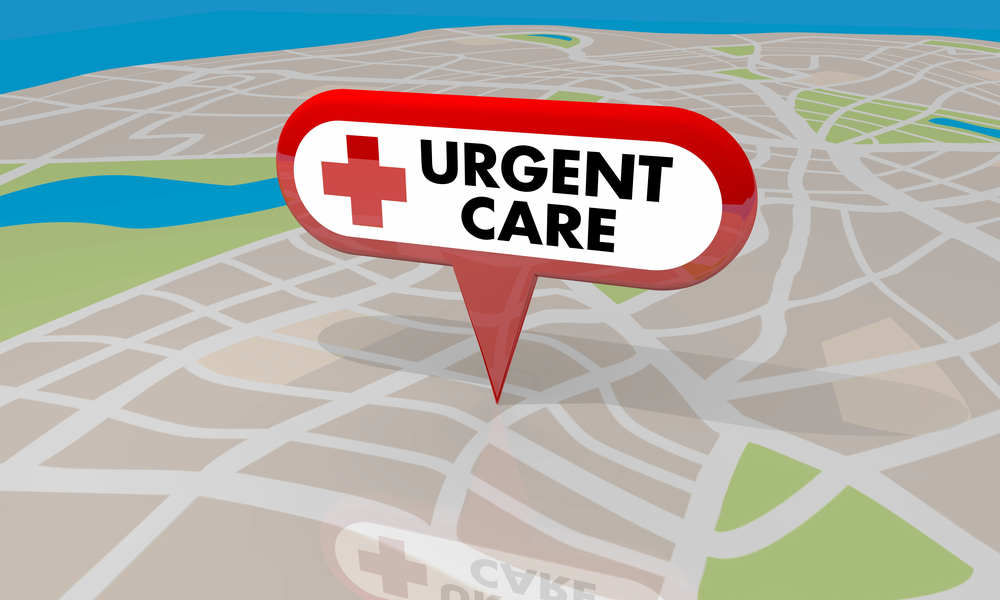Introduction
Effective revenue cycle management (RCM) is crucial for the financial health and success of healthcare organizations. From patient registration to claim submission and payment posting, each stage of the revenue cycle plays a vital role in optimizing revenue and ensuring timely reimbursement. In this article, we’ll explore the key components of revenue cycle management and how they contribute to maximizing revenue and minimizing financial risks for medical providers.
Patient Registration and Data Accuracy
Accurate patient registration is the first step in the revenue cycle and sets the foundation for successful billing and reimbursement. Ensuring data accuracy during the registration process helps prevent billing errors, claim denials, and delays in payment. Key considerations include:
- Obtaining complete and accurate patient demographic information, including name, date of birth, address, and insurance details.
- Verifying insurance coverage and eligibility to determine patient responsibility and coverage limitations.
- Collecting and documenting patient consent for treatment, financial responsibility, and privacy practices to comply with regulatory requirements and protect patient rights.
Learn more
Insurance Eligibility and Verification
Verifying insurance eligibility and coverage is essential for determining patient responsibility, billing accuracy, and reimbursement potential. Failing to verify insurance information can lead to claim denials, delayed payments, and revenue loss. Effective management includes:
- Verifying insurance coverage and benefits prior to providing services to ensure coverage for medical services and procedures.
- Confirming insurance eligibility, plan details, and coverage limitations to accurately estimate patient responsibility and verify payer information.
- Utilizing technology and automation tools to streamline the insurance verification process and reduce manual errors.
Learn more
Charge Capture and Coding
Accurate charge capture and coding are critical for ensuring that healthcare services are properly documented and billed. Proper coding ensures that services rendered are accurately represented, resulting in appropriate reimbursement and compliance with regulatory requirements. Strategies for optimization include:
- Assigning appropriate procedure and diagnosis codes based on documented medical services and patient encounters.
- Ensuring coding accuracy and compliance with coding guidelines, regulations, and payer requirements.
- Implementing coding audits and quality control measures to identify coding errors, discrepancies, and areas for improvement.
Learn more
Claim Submission
Timely and accurate claim submission is essential for prompt reimbursement and cash flow optimization. Delayed or incorrect claim submission can result in payment delays, claim denials, and revenue loss. Methods to streamline the process include:
- Submitting claims electronically whenever possible to expedite processing and reduce manual errors.
- Ensuring claims are submitted with complete and accurate information to minimize rejections and denials.
- Monitoring claim status and following up on unpaid or rejected claims promptly to resolve issues and expedite payment.
Learn more
Payment Posting
Efficient payment posting is crucial for reconciling payments received from payers and patients with billed services and claims. Accurate payment posting ensures that payments are applied correctly, balances are updated, and outstanding accounts are managed effectively. Key practices include:
- Posting payments promptly upon receipt to maintain accurate accounts receivable records and prevent payment delays.
- Reconciling payments with corresponding claims and billed services to ensure accuracy and completeness.
- Identifying and addressing posting errors or discrepancies promptly to avoid billing inaccuracies and revenue loss.
Learn more
Denial Management
Denial management is a critical component of revenue cycle management, focusing on identifying, appealing, and resolving claim denials to maximize reimbursement and minimize revenue loss. Effective denial management requires proactive monitoring, analysis, and resolution of denied claims. Steps for effective management include:
- Tracking and analyzing denial trends to identify root causes and implement corrective actions to prevent future denials.
- Developing an organized and systematic process for appealing denied claims, including documentation of supporting evidence and timely submission of appeals.
- Collaborating with payers and providers to resolve claim denials and disputes efficiently, maximizing reimbursement and minimizing revenue loss.
Learn more
Accounts Receivable Follow-up
Accounts receivable (AR) follow-up is essential for managing outstanding balances, resolving unpaid claims, and maximizing revenue collection. Proactive follow-up on unpaid claims helps accelerate cash flow and reduces accounts receivable aging. Effective AR management strategies include:
- Prioritizing accounts based on aging and outstanding balances to focus efforts on high-priority accounts.
- Establishing clear follow-up protocols and timelines for contacting payers and patients regarding outstanding balances.
- Implementing technology and automation tools to streamline AR follow-up processes and improve efficiency.
Learn more
Patient Collections
Patient collections play an increasingly important role in revenue cycle management as patient responsibility continues to grow. Collecting patient payments upfront and establishing clear payment expectations can help minimize bad debt and improve revenue collection. Effective strategies include:
- Educating patients about their financial responsibility and payment options upfront, including copayments, deductibles, and coinsurance.
- Offering flexible payment plans and financial assistance options to help patients manage healthcare costs and reduce financial barriers to care.
- Implementing automated payment collection tools and processes to streamline patient collections and improve efficiency.
Learn more
Compliance and Regulatory Requirements
Compliance with healthcare regulations and regulatory requirements is essential for mitigating risk, ensuring ethical billing practices, and avoiding penalties or fines. Healthcare organizations must stay informed about changing regulations and guidelines to maintain compliance. Effective compliance measures include:
- Staying up-to-date on federal, state, and local regulations governing healthcare billing, coding, and reimbursement.
- Implementing policies, procedures, and training programs to ensure compliance with regulatory requirements and industry standards.
- Conducting regular audits and assessments to monitor compliance and identify areas for improvement.
Learn more
Technology and Automation
Technology and automation play a significant role in streamlining revenue cycle management processes, improving efficiency, and reducing manual errors. Leveraging technology solutions can help healthcare organizations optimize revenue cycle performance and maximize financial outcomes. Effective technology integration includes:
- Implementing revenue cycle management software and electronic health record (EHR) systems to automate billing, coding, and claims processing.
- Utilizing artificial intelligence (AI) and machine learning (ML) technologies to identify coding errors, billing discrepancies, and denial trends.
- Integrating electronic payment processing and patient engagement solutions to streamline payment collection and improve patient satisfaction.
Learn more
Financial Analysis and Reporting
Financial analysis and reporting provide valuable insights into revenue cycle performance, financial trends, and opportunities for improvement. Healthcare organizations must regularly monitor key performance indicators (KPIs) and financial metrics to assess revenue cycle health and identify areas for optimization. Effective financial analysis and reporting practices include:
- Generating regular reports and dashboards to track revenue cycle KPIs, including accounts receivable days, denial rates, and collection rates.
- Analyzing financial data to identify trends, patterns, and areas for improvement in revenue cycle performance.
- Using financial analysis insights to develop actionable strategies and initiatives to optimize revenue cycle operations and maximize financial outcomes.
Learn more
Contract Management and Payer Negotiations
Effective contract management and payer negotiations are essential for maximizing reimbursement rates, optimizing payer contracts, and improving financial performance. Healthcare organizations must carefully manage payer contracts and negotiate favorable terms to ensure fair reimbursement for services rendered. Effective negotiation strategies include:
- Reviewing and negotiating payer contracts regularly to ensure alignment with organizational goals and objectives.
- Analyzing payer contract terms, fee schedules, and reimbursement rates to identify opportunities for improvement and negotiation.
- Collaborating with payers to negotiate favorable contract terms, including reimbursement rates, payment terms, and dispute resolution processes.
Learn more
Patient Communication and Education
Patient communication and education are essential for promoting transparency, improving patient satisfaction, and facilitating timely payment collection. Educating patients about their financial responsibilities, billing processes, and payment options can help reduce confusion and minimize billing-related inquiries. Effective patient communication strategies include:
- Providing clear and transparent communication about billing policies, insurance coverage, and payment expectations to patients.
- Offering patient-friendly billing statements and explanations of benefits (EOBs) to help patients understand their financial responsibility.
- Educating patients about available payment options, financial assistance programs, and resources to help them manage healthcare costs.
Learn more
Quality Assurance and Performance Improvement
Quality assurance and performance improvement initiatives are critical for maintaining high standards of performance, identifying opportunities for improvement, and optimizing revenue cycle operations. Healthcare organizations must continuously monitor, evaluate, and enhance revenue cycle processes to achieve operational excellence. Effective quality assurance measures include:
- Establishing quality assurance programs and performance metrics to monitor revenue cycle performance and identify areas for improvement.
- Conducting regular audits and assessments to evaluate coding accuracy, claim submission processes, and denial management practices.
- Implementing continuous improvement initiatives and best practices to optimize revenue cycle operations and enhance financial outcomes.
Learn more
Conclusion
Effective revenue cycle management is essential for optimizing revenue, improving financial performance, and ensuring the long-term success of healthcare organizations. By implementing best practices and strategies across key revenue cycle components, healthcare providers can streamline operations, maximize reimbursement, and achieve financial stability. At Quest National Services, we specialize in providing comprehensive revenue cycle management services to healthcare providers, helping them navigate the complexities of billing, coding, and reimbursement with confidence. Contact us today to learn more about how our RCM solutions can support your practice and optimize your revenue cycle performance.









